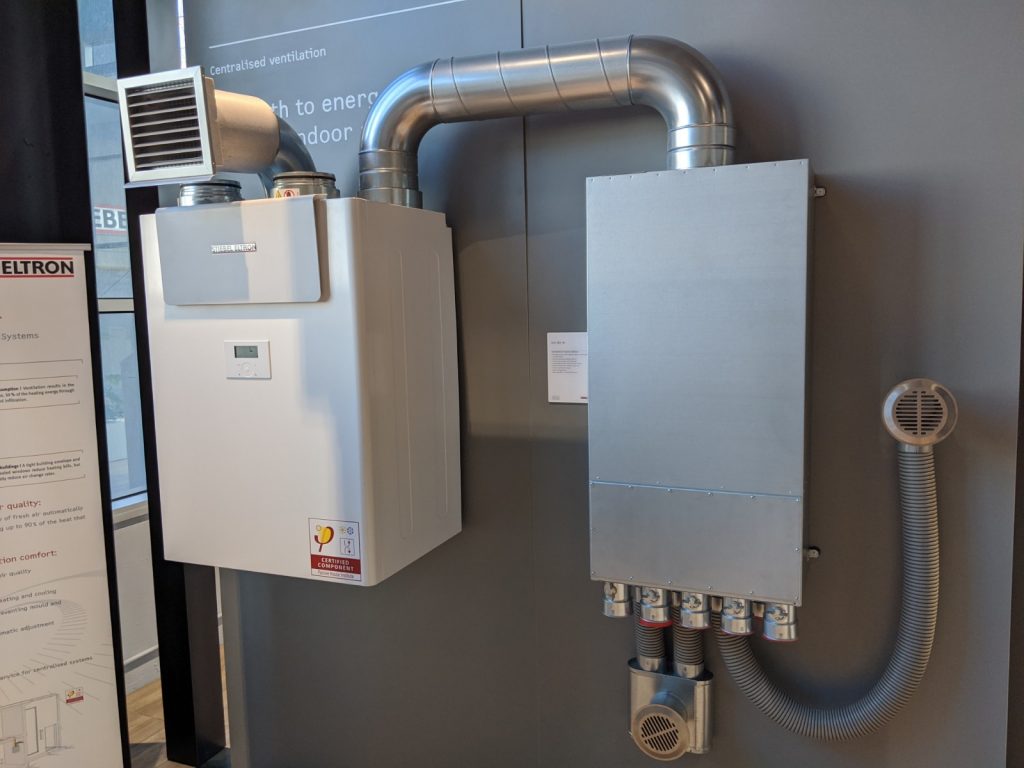The All-Inclusive Overview to the Uses of Heat Recovery Ventilation in Modern Structures
Heat Recovery Ventilation (HRV) systems represent a considerable improvement in developing technology (HRV Heat Recovery Ventilation). They offer a technique for trading stale indoor air with fresh exterior air while decreasing power loss. This strategy not just boosts indoor air high quality yet also adds to power efficiency in both residential and industrial buildings. Understanding the different applications and advantages of HRV can disclose its crucial duty in contemporary design and sustainability initiatives. The effects of this modern technology are worth discovering even more
Comprehending Heat Recovery Ventilation Equipments

Numerous contemporary structures focus on energy efficiency, comprehending warmth recuperation air flow (HRV) systems is vital for enhancing indoor air quality and lowering power usage. HRV systems work by moving warm from stale interior air to incoming fresh air, properly keeping comfy indoor temperature levels while reducing energy loss. These systems include a warmth exchanger, followers, and ductwork that help with the blood circulation of air. Throughout winter, HRV systems capture and reuse warm from the outbound air, while in summer season, they can aid cool inbound air. By constantly exchanging air, HRV systems also lower humidity and the focus of indoor pollutants. Proper setup and upkeep of HRV systems are vital for their performance and efficiency in boosting overall structure efficiency and comfort.
Advantages of Heat Recovery Ventilation
Heat recovery ventilation systems provide various advantages that improve both power effectiveness and interior air top quality in contemporary buildings. By catching and recycling energy from exhaust air, these systems considerably minimize cooling and heating costs, leading to reduced energy consumption. They keep a stable flow of fresh outside air, reducing the danger of interior air pollutants and allergens. This continual exchange helps regulate moisture levels, protecting against mold and mildew growth and making certain a much healthier living environment. In addition, HRV systems add to sustainability goals by reducing overall carbon footprints. Their capacity to maximize air flow without compromising thermal convenience makes them a beneficial addition to modern building layout, advertising both financial and ecological benefits.
Applications of HRV in Residential Structures
As homeowners increasingly focus on power effectiveness and indoor air quality, the applications of warmth healing ventilation (HRV) systems in household structures have actually become a lot more common. HRV systems are especially useful in snugly sealed homes, where keeping fresh air circulation is necessary for protecting against moisture buildup and indoor contaminants. They properly move heat from outgoing stale air to inbound fresh air, reducing energy expenses connected with heating and air conditioning. In addition, HRVs can enhance comfort levels by managing humidity and temperature level. They are also versatile for various residential layouts, consisting of single-family homes and multi-unit buildings. Generally, integrating HRV systems sustains lasting Continue living techniques while ensuring a much healthier interior setting for passengers.
HRV in Business and Commercial Setups
In business and commercial setups, the execution of warmth recuperation air flow (HRV) systems has ended up being progressively important for enhancing energy effectiveness and preserving air quality. These systems effectively transfer warmth from exhaust air to inbound fresh air, decreasing the need for additional home heating or air conditioning. This not only lowers power prices however also contributes to sustainability campaigns. Industries such as production, warehousing, and office complex profit significantly from HRV systems, as they help regulate temperature level and moisture levels, making certain a comfy and productive setting. HRV systems help in eliminating contaminants and excess dampness, improving indoor air high quality. As policies around air quality become stricter, the fostering of HRV innovation is most likely to expand, making it an important element of modern-day business and industrial infrastructure.
Future Patterns in Heat Recovery Ventilation Technology

Frequently Asked Concerns
How Does Heat Recovery Ventilation Effect Indoor Air High Quality?
Heat recovery ventilation significantly improves interior air top quality by continuously exchanging stale interior air with fresh exterior air while recuperating power. This procedure decreases contaminants, preserves optimal humidity levels, and assures a you could try this out healthier setting for passengers.
Can HRV Equipments Be Mounted in Existing Structures?
HRV systems can undoubtedly be set up in existing buildings. Retrofitting may call for alterations to ductwork and ventilation layouts, but it substantially improves energy efficiency and interior air high quality, making it a practical alternative for older frameworks.
What Maintenance Is Needed for HRV Solutions?

Exist Certain Climates Where HRV Is Much More Effective?
Heat recovery ventilation systems are specifically efficient in climates with substantial temperature level differences in between seasons. These systems optimize power efficiency by recouping warm from exhaust air, making them optimal for both cold and reasonably warm settings.
Exactly How Do HRV Systems Affect Power Bills?
